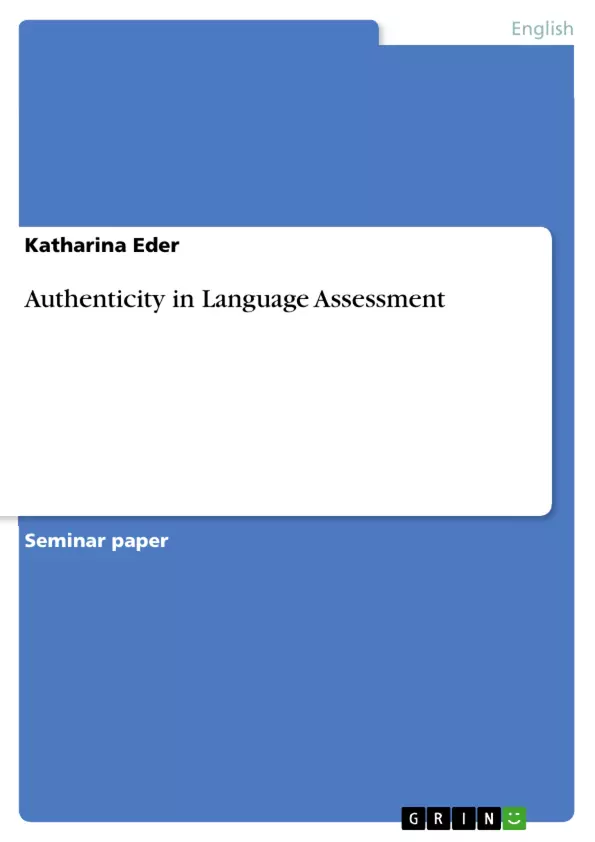Authenticity is regarded as an important feature of language tests, but commonly the notion is related only to the use of authentic material. In the course of this class, however, we found out that the concept of authenticity is actually far more comprehensive. It does indeed include characteristics of the input of test tasks, but it is also concerned with the interaction between input and expected response, the setting and the format of a test. Hence, we decided to work mainly on the topic of authenticity in this final report of our course on language assessment.
Table of Contents
- Authenticity in Language Assessment
- Introduction
- The Concept of Authenticity
- Assessment of Authenticity
- The Setting
- Characteristics of the Test Rubrics
- Characteristics of the Input
- Characteristics of the Expected Response
- Conclusion
Objectives and Key Themes
This final report aims to explore the concept of authenticity in language assessment, focusing on a practical application through the analysis of a reading test developed in a class project. The report examines how different aspects of the test, including the setting, test rubrics, input, and expected responses, contribute to or detract from the overall authenticity of the assessment.
- The evolution of the concept of authenticity in language testing
- The theoretical framework of Bachman and Palmer (1996) for assessing authenticity in language tests
- The practical application of this framework in the context of a class project reading test
- The identification of areas where the test falls short in terms of authenticity
- The potential for improving the level of authenticity in future test design
Chapter Summaries
- Introduction: This chapter provides an overview of the concept of authenticity in language assessment, emphasizing the importance of aligning test tasks with real-world language use.
- The Concept of Authenticity: This chapter explores the historical development of the concept of authenticity, highlighting its shift from a focus on authentic materials to a broader understanding that includes test setting, interaction, and response.
- Assessment of Authenticity: This chapter outlines the framework developed by Bachman and Palmer (1996) for evaluating the authenticity of language tests, emphasizing the importance of considering both task characteristics and test taker perceptions.
- The Setting: This chapter analyzes the setting of the class project reading test in terms of its authenticity, considering factors such as the physical environment, time constraints, and the anonymity of the texts.
- Characteristics of the Test Rubrics: This chapter examines the test rubrics in terms of their authenticity, focusing on the explicitness of instructions, the structure of the test, and the time constraints.
- Characteristics of the Input: This chapter delves into the authenticity of the reading test's input, considering factors such as the combination of text and task, the layout of the texts, the length of the texts, the text types used, and the language employed.
- Characteristics of the Expected Response: This chapter analyzes the authenticity of the expected response in the reading test, examining the nature of the response required and its alignment with real-world reading practices.
Keywords
The key concepts explored in this report include authenticity, language assessment, reading tests, test design, task characteristics, real-world language use, TLU (target language use), situational authenticity, interactional authenticity, test rubrics, input, expected response, and the framework of Bachman and Palmer (1996).
- Quote paper
- Katharina Eder (Author), 2010, Authenticity in Language Assessment, Munich, GRIN Verlag, https://www.hausarbeiten.de/document/172655


